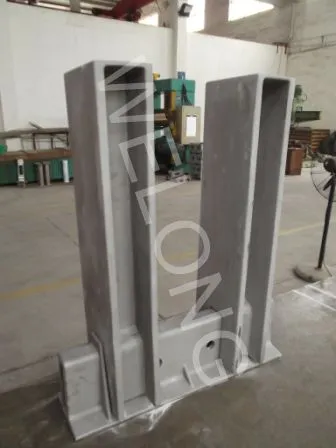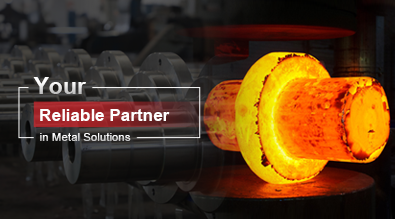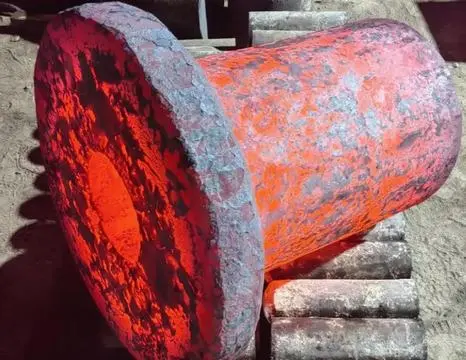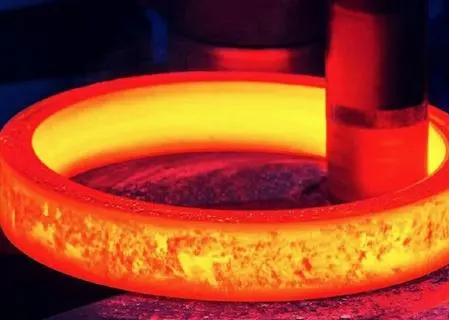What Is Water Glass Casting?
Water glass casting, also known as sodium silicate casting, is an innovative and versatile manufacturing process used to create intricate metal parts and components. This method utilizes a unique mixture of water glass (sodium silicate) and refractory materials to form molds, allowing for the production of complex shapes with high dimensional accuracy. Water glass casting has gained popularity in various industries due to its cost-effectiveness, environmental friendliness, and ability to produce high-quality castings.

How does water glass casting work?
The basics of water glass casting
Water glass casting is a process that involves creating a mold using a mixture of sodium silicate (water glass) and refractory materials. The mold is then filled with molten metal, which solidifies to form the desired shape. This method is particularly useful for producing complex geometries and thin-walled components that may be challenging to manufacture using traditional casting techniques. The water glass binder provides excellent strength and dimensional stability to the mold, ensuring accurate reproduction of the original pattern. Additionally, the use of water glass as a binder offers environmental benefits, as it is non-toxic and produces minimal emissions during the casting process.
Advantages of water glass casting
Water glass casting offers several advantages over other casting methods. Firstly, it allows for the production of highly detailed and intricate parts with excellent surface finish. The water glass binder provides good flowability, enabling the mold mixture to capture fine details of the pattern. Secondly, this casting technique is cost-effective, especially for small to medium production runs, as it requires minimal equipment and setup costs compared to other casting processes. Furthermore, water glass casting is environmentally friendly, as the binder is non-toxic and can be easily recycled. This method also offers good dimensional accuracy and repeatability, making it suitable for producing precision components in various industries, including automotive, aerospace, and general engineering.
Applications of water glass casting
Water glass casting finds applications in a wide range of industries due to its versatility and ability to produce complex shapes. In the automotive sector, it is used to manufacture engine components, transmission parts, and structural elements. The aerospace industry utilizes water glass casting for producing turbine blades, impellers, and other critical components. This casting method is also employed in the production of pump housings, valve bodies, and other fluid handling equipment. Additionally, water glass casting is suitable for creating artistic and decorative objects, as it can capture intricate details and textures. The medical industry also benefits from this technique, using it to produce custom implants and prosthetics with complex geometries. Overall, water glass casting offers a versatile solution for manufacturing a diverse range of metal components across various industries.
What are the key steps in the water glass casting process?
Mold preparation
The first crucial step in water glass casting is mold preparation. This process begins with creating a pattern of the desired part, typically made from wood, plastic, or metal. The pattern is then placed in a flask or molding box, and a mixture of sand and water glass binder is packed around it. The sand-water glass mixture is carefully compacted to ensure proper filling of all cavities and details. Once the mold is formed, it is hardened using carbon dioxide gas, which reacts with the water glass binder to create a strong, rigid mold. This hardening process, known as gassing, is essential for maintaining the mold's integrity during the casting process. Proper mold preparation is critical for achieving high-quality castings with accurate dimensions and surface finish.
Metal pouring and solidification
After the mold is prepared and hardened, the next step in water glass casting is metal pouring and solidification. The chosen metal or alloy is melted in a furnace and heated to the appropriate temperature for casting. The molten metal is then carefully poured into the prepared mold through a gating system, which ensures smooth and controlled filling of the mold cavity. As the metal flows into the mold, it begins to cool and solidify, taking on the shape of the mold cavity. The solidification process is critical, as it affects the final properties of the casting, such as strength, grain structure, and dimensional accuracy. Proper control of pouring temperature, pouring rate, and cooling conditions is essential to achieve optimal results in water glass casting. Once the metal has completely solidified, the casting is allowed to cool before being removed from the mold.
Post-casting operations
After the casting has cooled and solidified, several post-casting operations are performed to complete the water glass casting process. The first step is typically mold knockout, where the casting is removed from the sand mold. This is often done by breaking away the sand mold, which can be easily recycled for future use. Once removed, the casting undergoes cleaning and finishing processes to remove any remaining sand or mold material. This may involve shot blasting, grinding, or other abrasive techniques. Next, the gating system and any excess material are removed through cutting or grinding operations. Depending on the specific requirements of the part, additional heat treatment processes may be applied to enhance the mechanical properties of the casting. Finally, the cast part undergoes inspection and quality control measures to ensure it meets the required specifications. These post-casting operations are crucial for producing high-quality components through the water glass casting process.
What are the challenges and limitations of water glass casting?
Environmental considerations
While water glass casting is generally considered an environmentally friendly process, there are still some environmental considerations to take into account. One of the main concerns is the disposal of used sand and binder materials. Although the water glass binder is non-toxic, proper management of waste materials is essential to minimize environmental impact. Recycling and reuse of sand can help reduce waste, but some portion may still require disposal. Additionally, the carbon dioxide used in the gassing process contributes to greenhouse gas emissions, albeit in relatively small quantities compared to other industrial processes. Manufacturers employing water glass casting should implement proper waste management practices and explore ways to minimize their carbon footprint. Despite these considerations, water glass casting remains a more environmentally friendly option compared to many traditional casting methods that use organic binders or release harmful emissions.
Technical limitations
Water glass casting, while versatile, does have some technical limitations that need to be considered. One of the primary challenges is the control of mold hardness and permeability. The gassing process used to harden the mold can sometimes result in variations in mold strength, which can affect the quality of the final casting. Additionally, the water glass binder can sometimes cause surface defects on the casting, such as veining or metal penetration, if not properly controlled. Another limitation is the relatively slow production rate compared to some other casting methods, as the mold preparation and gassing process can be time-consuming. The size of castings that can be produced using water glass casting is also limited, as very large molds may be difficult to handle and gas uniformly. Furthermore, certain metals and alloys may not be suitable for water glass casting due to their reactivity with the binder or their specific solidification characteristics. Despite these limitations, ongoing research and technological advancements continue to improve the water glass casting process and expand its capabilities.
Quality control and optimization
Ensuring consistent quality in water glass casting requires rigorous quality control measures and continuous optimization of the process. One of the key challenges is maintaining uniform mold properties throughout the production run. This involves careful control of the sand-water glass mixture composition, compaction techniques, and gassing parameters. Regular testing of mold strength and permeability is essential to detect any variations that could affect casting quality. Another important aspect of quality control is the management of metal pouring parameters, including temperature, flow rate, and cooling conditions. These factors directly influence the microstructure and mechanical properties of the final casting. Implementing advanced process monitoring and control systems can help maintain consistency and detect potential issues early in the production process. Additionally, ongoing optimization efforts are crucial to improve the efficiency and quality of water glass casting. This may involve experimenting with different binder formulations, exploring new sand types, or implementing innovative gassing techniques. By addressing these quality control and optimization challenges, manufacturers can maximize the benefits of water glass casting and produce high-quality components consistently.
Conclusion
Water glass casting is a versatile and environmentally friendly manufacturing process that offers numerous advantages for producing complex metal components. By utilizing sodium silicate as a binder, this method provides excellent mold strength, dimensional accuracy, and surface finish. While there are some challenges and limitations to consider, ongoing research and technological advancements continue to improve the process. As industries increasingly prioritize sustainable manufacturing practices, water glass casting is likely to play an important role in the future of metal casting. Its ability to produce high-quality parts with minimal environmental impact makes it an attractive option for a wide range of applications across various industries.
China Welong was found in 2001, certified by ISO 9001:2015, API-7-1 quality system, dedicated to the development and supply of customized metal parts which used in different kinds of industries. Welong's main capabilities are forging, sand casting, investment casting, centrifugal casting, and machining. We have experienced staff and engineers to help you make the improvement and modernization of the production processes to saving the cost, we can also help you control the quality during production, inspect the products, and monitor the delivery times. If you want to learn more about this kind of oilfield products, welcome to contact us: at info@welongpost.com.
References
- Brown, J. R. (2018). Foseco Ferrous Foundryman's Handbook. Butterworth-Heinemann.
- Campbell, J. (2015). Complete Casting Handbook: Metal Casting Processes, Metallurgy, Techniques and Design. Butterworth-Heinemann.
- Beeley, P. R. (2001). Foundry Technology. Butterworth-Heinemann.
- Rao, T. V. (2018). Metal Casting: Principles and Practice. New Age International.
- Kaufman, J. G., & Rooy, E. L. (2004). Aluminum Alloy Castings: Properties, Processes, and Applications. ASM International.
- Dhiman, R. K. (2019). Optimization of Casting Processes: An Introduction. Springer.


China WELONG-Your Reliable Partner in Metal Solutions

